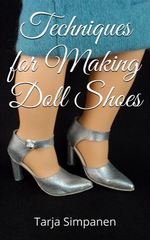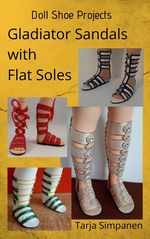The seat cushion of the armchair has flattened so much over the years that the chair is now too hard to sit on. I started using a pillow on it, and the Moomin pillow is perfect for this purpose (it's too flat for sleeping). I was using it as it is, but today I decided it would be a good idea to make a cover for it to make it last longer.
I didn't have a suitable zipper, so I decided to make the cover the same way we made the pillow cases. After all, nobody's going to look under the pillow, just the top of it matters. The photo below shows the parts: top in the middle and the bottom parts on both sides of it. The fabric I used for the bottom parts had some stains (it was from the yesterday's 5 € batch), but as it was similar on both sides, I just turned the pieces so that the stains went on the inside.
First you combine the pieces. I used seam allowances of 1 cm. The sewing machine has measurements marked in it, but I decided to use a magnet just to make sure that the seam is straight. I don't have the kind of magnet that's meant for this, so I just picked a rectangular one from the fridge door.
When you have combined all the pieces, hem the ends, fold the fabric and sew the side seams.
Finally, turn the pillow case right side out and put the pillow inside. In this case, the pillow required quite a bit of reshaping to get the insides spread evenly as the pillow case was slightly smaller than the pillow.
This is probably a temporary solution, and I'll make a better one when I get a long enough zipper. Still, it's a perfectly good way of making a cover for a pillow.
One thing I noticed as I was sewing this is that my sewing machine is slow. I hadn't used it after I started using the industrial machines, so I was surprised by the difference. Today was the first time I set the machine to the maximum speed and pressed the pedal all the way down as I was sewing the long seams. It still felt sluggish.






























